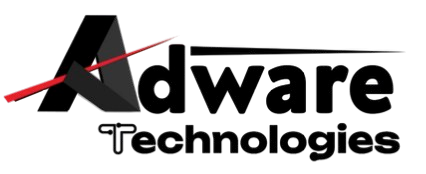In the developing landscape of web development, certain technologies stand the test of time, proving their flexibility and adaptability. One such trust in the realm of web frameworks is Ruby on Rails (RoR). As we step into 2024, it’s worth exploring why Ruby on Rails remains a faithful choice for developers and businesses alike.
Understanding Ruby on Rails: A Brief Overview
Ruby on Rails, commonly known as Rails or RoR, is an open-source web application framework written in the Ruby programming language. Created by David Heinemeier Hansson and released in 2005, Ruby On Rails has since gained popularity for its focus on simplicity, convention over configuration, and the principles of don’t repeat yourself (DRY) and convention over configuration.
1. Ease of Development:
One of the enduring strengths of Ruby on Rails developers is happiness and productivity. The framework follows the principle of convention over configuration, meaning developers can focus more on writing application code rather than configuring files. This results in a streamlined development process and a shorter time to market for projects.
2. Rapid Prototyping:
In the fast world of web development, the ability to quickly prototype and iterate quickly is invaluable. Ruby on Rails is skillful in this area, allowing developers to rapidly build and test samples. This feature is particularly beneficial for startups and projects with evolving requirements.
3. Community and Ecosystem:
Ruby on Rails boasts a vibrant and supportive community. This community-driven approach has a wealth of resources, Ruby libraries, and plugins readily available for developers. The collective spirit of the Ruby on Rails community fosters knowledge sharing and regular improvement.
4. Scalability:
That is wrong that Ruby on Rails is not scalable, the framework has proven its scalability in numerous high-traffic applications. With proper design and optimization, Rails applications can handle Structural load. Several successful startups and established companies continue to rely on Ruby on Rails for their scalable web solutions.
5. Maintainability and Readability:
The lucid and readable syntax of the Ruby language contributes to the maintainability and scalability of Rails applications. Code readability is a core principle in Ruby on Rails, making it easier for developers to understand and work.
6. Active Record ORM:
In Ruby on Rails, we use the Active Record ORM (Object-Relational Mapping) pattern to make working with database interactions. This layer lets developers use Ruby code to interact with databases, cutting down on the need for complicated SQL queries. This makes our database code cleaner and more maintainable database code.
7. Security Standards:
Security is a paramount concern in web development, and Ruby on Rails is committed to maintaining high standards. The framework provides built-in security types and follows best practices, helping developers create secure applications. Regular updates and a watchful community contribute to a robust security posture.
8. Versatility and Flexibility:
Ruby on Rails is flexible and suitable for a wide range of applications. Whether you’re building a content management system (CMS), an online store, or a social networking site, Rails provides the flexibility to meet project requirements. Its modular architecture supports the integration of libraries and tools.
9. Developer Satisfaction:
The developer experience is a factor in the longevity of any technology. Ruby on Rails has consistently prioritized developer satisfaction first by offering an enjoyable and efficient development environment. This emphasis on developer well-being is one reason why the framework remains so popular.
10. Adaptation to Modern Trends:
Despite being more than a decade old, Ruby on Rails continues to adapt to modern web development trends in 2024. Regular updates and releases introduce features and improvements aligned with the evolving needs of the industry. The framework remains relevant in an era of microservices, APIs, and serverless design.
How it is beneficial for the development Of web application
Ruby on Rails, often referred to simply as Rails, provides numerous advantages for web application development, which contribute to its widespread popularity among developers. Here are some key benefits of using Ruby on Rails:
a) Rapid Development
b) Convention-Based Configuration
c) Developer Productivity
d) Active Record ORM
e) Scalability
f) Extensive Gem Ecosystem
g) Community Support
h) Security Features
I) RESTful Architecture
j) Maintainability
k) Versatility
L) Community-Driven Innovation
The Rails community actively contributes to the nonstop improvement of the framework. Regular updates and releases introduce new features and improvements aligned with the evolving needs of the industries.
What are the challenges?
While Ruby on Rails is a powerful and famous web application framework, like any technology, it comes with its set of challenges. Understanding these challenges is important for developers and businesses to make informed decisions. Here are some common challenges connected with Ruby on Rails development:
1. Learning Curve
2. Performance Concerns
3. Scalability Misconceptions
4. Upgrading Versions
5. Monolithic Architecture
6. Conventions Limit Flexibility
7. Resource Intensive
8. Community Dynamics
9. Maintaining Older Codebases
10. Front-End Development Integration
11. Vendor Lock-In Concerns
For more information, connect with us any time.




Comments (0)